Morning Glory (Ipomoea) are beautiful flowering climbers which are normally grown as hardy annuals in the UK. They can produce sizeable plants, often 6 to 10 feet in height, and are most frequently grown in greenhouses or in patio planters. However, if you have a warm conservatory or even a large full-length window, Ipomoea can also be grown indoors if you have the space.
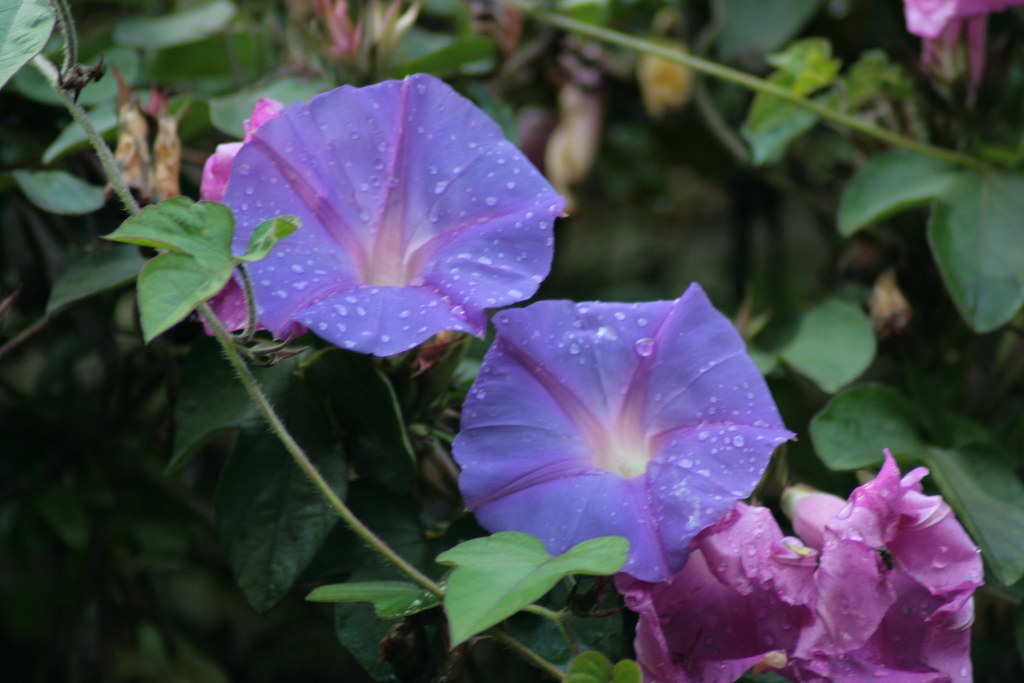
The genus Ipomoea
Although this post is concerned with the relatively small number of decorative climbers that are grown as summer flowering annuals that can be trained up canes or over obelisks, Ipomoea is the largest genus within the family Convolvulaceae with over 600 species. The genus even includes the tuber-forming plant that gives us sweet potatoes (I. batatas)!
Ipomoea originate from the tropical and sub-tropical forests , bearing a profusion of trumpet shaped flowers that normally open in the bright morning sun but fade and close during the afternoon. A number of species, previously classified in Calonyction, have flowers that open in the evening, hence their common name moonflowers. Although Morning Glory are strictly a short-lived perennial the best results are obtained if they are treated as hardy or half-hardy annuals.
The flowers are rich in nectar and attract pollinating insects such as moths and butterflies, and even hummingbirds in their native jungles. The colours range through pinks, purples and blues and there are also varieties with pastel shades or striped and marbled patterns.
Ipomoea species and cultivars
The Morning Glory most commonly grown as decorative flowering climbers are Ipomoea tricolor and Ipomoea purpurea. Various cultivars are widely available and are easy to grow from seed:
Ipomoea tricolor “Heavenly Blue’
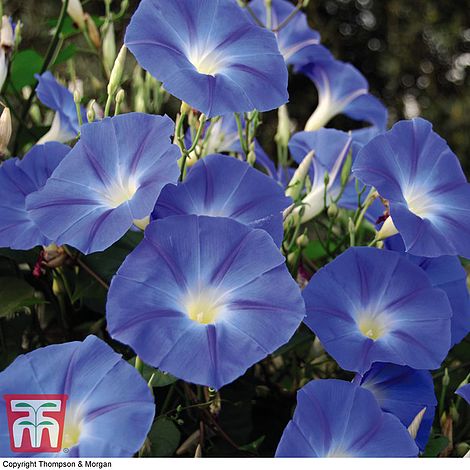
A spectacular free-flowering climber producing large blooms of graduated blue that open in the morning sun, fading and acquiring a pinkish tinge later in the afternoon. Ideal for greenhouse or conservatory cultivation. Likes warm, sunny conditions and may be less tolerant of cold conditions than ‘Grandpa Ott’.
Ipomoea ‘Grandpa Ott’
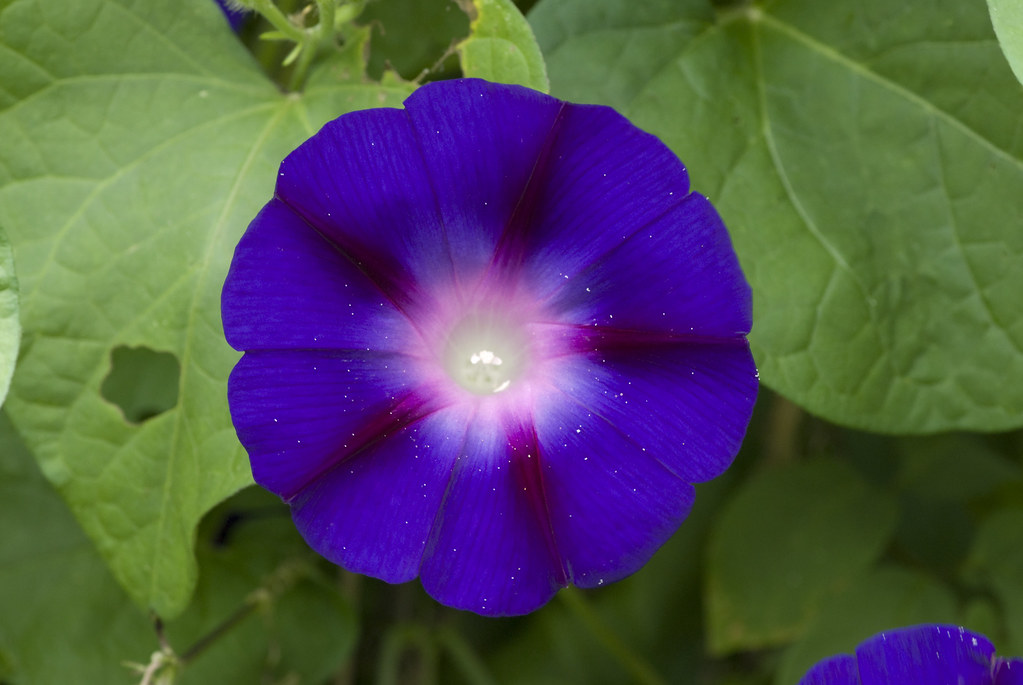
This variety produces smaller flowers than ‘Heavenly Blue’ but generally grows better in the UK climate if you decide to grow outdoors in a patio planter or as part of a bedding display. The flowers are an intense deep purple, with a pink-red centre.
Ipomoea ‘Star of Yelta’
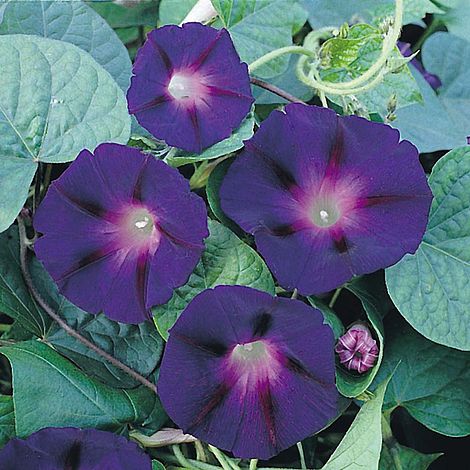
This variety resembles ‘Grandpa Ott’ in appearance, with violet blue / purple flowers borne profusely in warm sunny conditions.
‘Sunpuma Purple Princess’
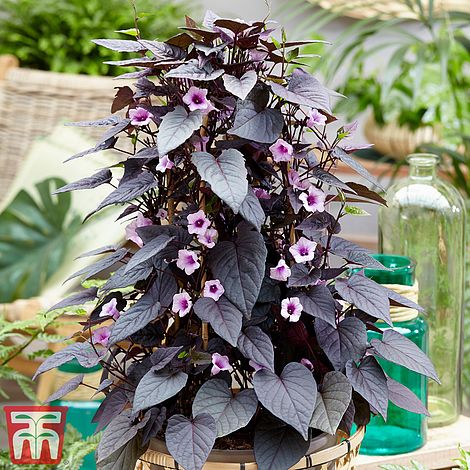
An exciting new variety available from Thompson & Morgan, this distinctive plant has bushy, compact growth and attractive purple foliage. The beautiful pale pink flowers contrast with the foliage to make a stunning subject for a conservatory planter. This variety grows to around 1 meter in height and starts flowering earlier than some varieties.
Ipomoea tricolor ‘Flying Saucers’
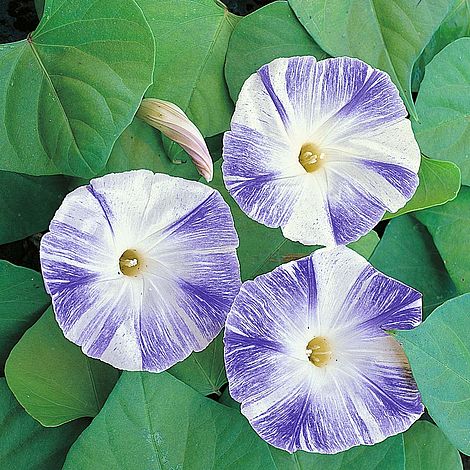
This free-flowering, vigorous climber produces beautiful white flowers that have mauve-blue streaks. This variety climbs to around 6 – 8 feet in height
Ipomoea purpurea ‘Lazy Luxe’
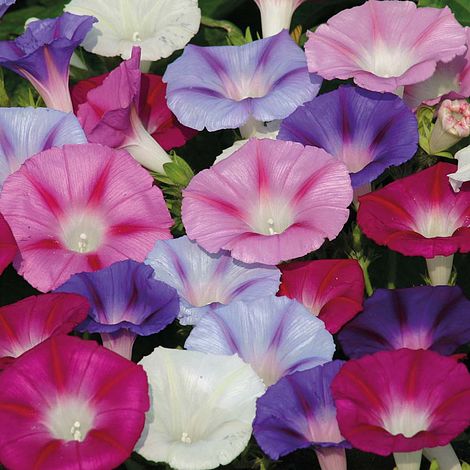
Available from Thompson & Morgan, this is one of the best mixtures of Morning Glory, containing ten fabulous colours that have been selected to flower at the same time. An easy to grow, vigorous climber.
Ipomoea purpurea ‘Split Personality’
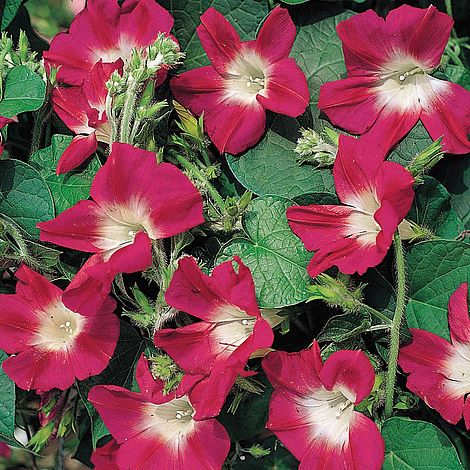
If you want something a little different from traditional Ipomoea, the star like blooms of ‘Split Personality’ are certainly worth growing! The magenta pink blooms are divided into separate petals rather than the traditional trumpet form creating an eye-catching display for a cool conservatory. Grows to around 6 feet in height.
Ipomoea ‘Hazelwood Blues’
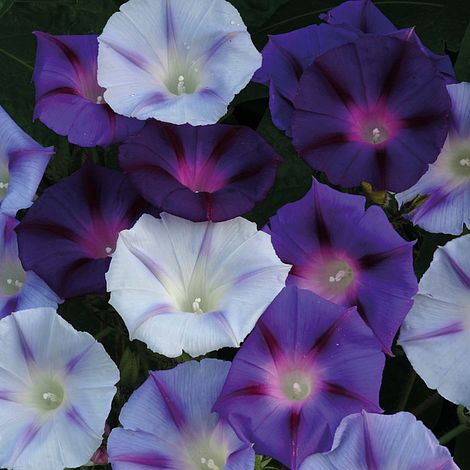
This is a glorious mix of some of the most attractive blue forms of Morning Glory. A very vigorous climber, looking wonderful when grown in a large planter. Superb when trained over an obelisk on the patio or in a cool conservatory if provided with enough space.
Raising Ipomoea from seed
Raising Morning Glory from seed is an easy process. To improve germination, soak the seeds in water for a few hours (or overnight) so that the outer casing is softened and the seed becomes hydrated before sowing.
Ipomoea should be sown indoors in early March if they are to be grown as conservatory plants; if you plan to grow them outdoors, sow the seeds indoors in April and do not transplant plants outside until all risk of frost has passed (ideally late May or June as a chill night can slow growth significantly).
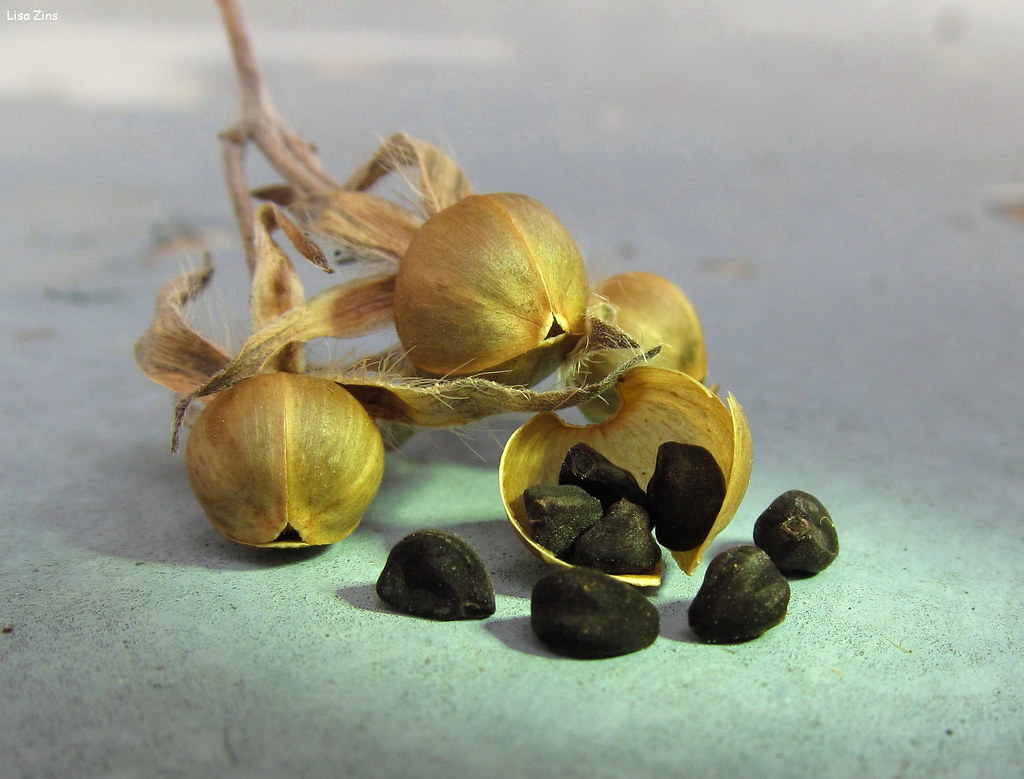
Once the seeds have been soaked, sow them into a soil-based compost. I find that a 1:1 mix of John Innes and a multipurpose compost, with added perlite, works really well.
As Morning Glory seeds are quite large, they can be easily positioned about an inch apart in seed trays, or in small pots. Cover the seeds with 5 – 10 mm of compost, firm gently and water well.
Place the seed trays or pots in a warm location, around 20 – 26 Celsius, and cover loosely with Clingfilm or place under a propagating cover to preserve humidity.
Morning Glory germinate quickly, with the first seedings often appearing within 3 – 5 days. Allow up to 12 – 14 days for full germination. The seedlings grow quickly; make sure they are receiving plenty of light and turn them regularly to prevent them becoming ‘leggy’ or lopsided.
Morning Glory seedlings will start to twine early so provide them with split canes or some other appropriate means of support otherwise they will twist around each other and form an unmanageable mass of spaghetti!
When the seedlings are large enough to handle they can be transplanted into small pots and grown on individually. Grow the plants on until they have a well developed root system that fills a 9 cm pot and then you can transfer them to their final position.
Ipomoea look best in group plantings, especially the traditional varieties which can produce rather thin, twining stems and appear a little sparse in habit when grown individually or in small groups.
Routine care of Ipomoea
Once the young plants have been planted in their final positions they require minimal care beyond providing a suitable framework over which they can grow. You can allow Ipomoea to twine up canes, over an obelisk or arch, or use pea & bean netting. If you are growing one of the shorter, bushier varieties such as ‘Sunpuma Purple Princess’ twiggy branches can be used for support.
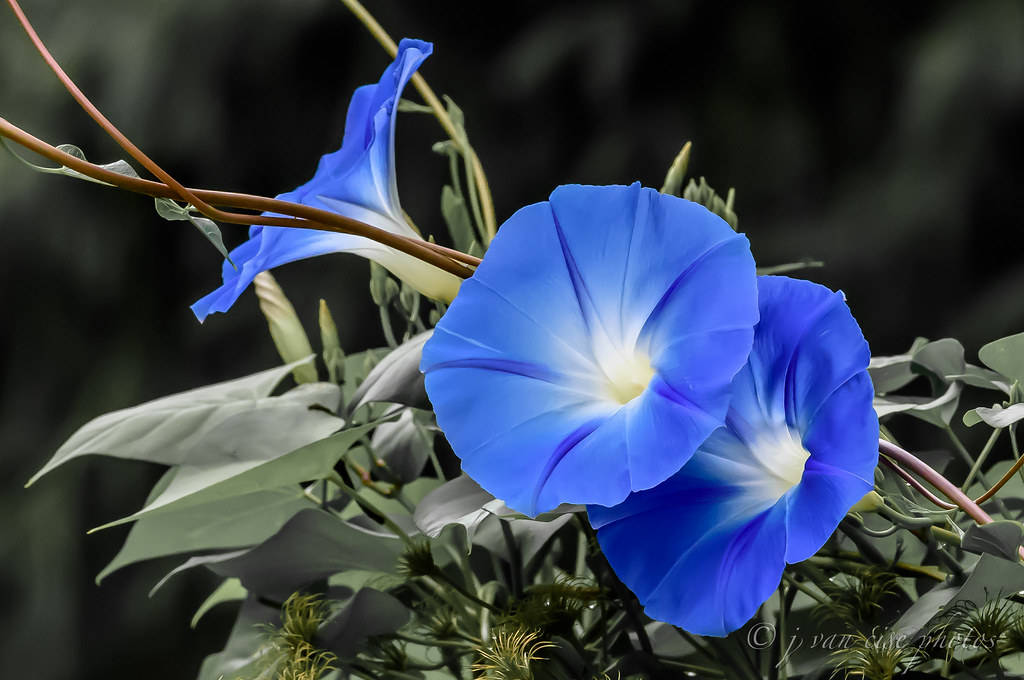
Morning Glory like a moist but free-draining soil although they can tolerate a short period of drought. They are not heavy feeders and a slow release fertiliser added to their pots is all that is required.
Pests & Diseases
Ipomoea grown in conservatories may be prone to aphids or red spider mite. Increasing humidity around the plants, and avoiding very high temperatures, can help to reduce the risk of severe infestations. Biological control can work very well in a conservatory setting. If that is not possible, or you prefer to use chemicals, a systemic pesticide designed for aphid and red spider mite control may be effective.
If you wish to transplant Ipomoea to a patio or summer bedding position, be warned that slugs and snails love the young shoots! Keeping plants indoors until they are quite large and the lower stems have become tougher is a good idea. I’ve had young Ipomoea grazed to ground level overnight, and they rarely grow back.